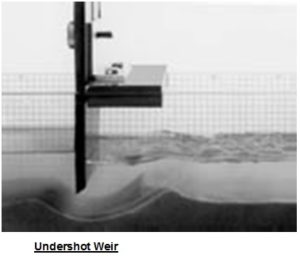HM-24 SEDIMENTATION TRANSPORTATION CHANNEL
Description
This sediment transport teaching facility allows demonstration of the full range of bed forms that arise in a mobile bed as the flow and/or slope are increased. The Channel can be used to perform most of the experiments and demonstrations usually undertaken in much larger laboratory flumes. The equipment is portable, and therefore may be used in the classroom as well as in the laboratory.
The unit consists of an inclinable channel mounted on a frame, together with a discharge tank and re-circulating pump. To commence a demonstration, sand is placed evenly along the channel bed, between the inlet tank and the overall discharge weir. The channel slope is adjusted by means of a fine screw jack to which is attached an accurate slope indicator. The channel sides are transparent in order that bed profile changes can be readily observed.

Experiments
- Fixed, smooth bed flow
- Flow over a mobile sand-bed
- Mechanics of sediment transport
- Depositionary features and facies
- Local scour
- Flow structures
- Bedform hysteresis
- Computational work
- Flow over a fixed, gravel bed
A water level gauge is supplied to measure the head over the channel discharge weir to deduce flow rates from a calibration chart. Solid models of a bridge pier and an undershot weir are provided to demonstrate the scour effects on river beds of man-made structures.

Features
- Basic unit for flow-related experiments in open flumes1
- Test section with transparent side walls
- Superb Painted structure
- Simple to operate & maintain
Utilities Required
- Sediment diameter: 1 to 0.3mm
- Weight of sand supplied: 15kg
- First fill of water (approx. 22 litres)


Technical Data
| Product & Code | Sediment transportation apparatus & HM-24 |
| Channel working section | Length: 1.55m Width: 78mm Depth: 110mm |
| Discharge rate
|
3 fixed flow rates between 0.2 and 0.6 litres/sec, selected by switch on pump |
| Slope | 0 to 4% |
| Shipping | Volume: 1m3, Gross weight: 150 kg |
| Overall dimensions | (l x b x h) 2.5 x 0.4 x1.1m (approx). |
BEDFORMS IN SAND
As water flows over sand in a river or on a beach it exerts a shear force on the bed. If the flow is strong enough, sand grains are lifted to roll and bounce along the bed. The shape of the bed responds to this motion by transforming into ripples. As the energy of the flow and transport rate of sand increase, the bedforms change. Ripples are replaced by larger dunes.
At higher energy still, the dunes are washed out to produce a flat bed and in extremely energetic flows anti-dunes appear. Bedforms are important in affecting the flow of water and movement of sediment in rivers and on beaches. They also occur in deserts due to the movement of sand by the wind.
Bedforms are preserved when sand deposits are turned into sandstone by geological processes. They are used to reconstruct environments under which the sand was deposited.

ABOUT OUR COMPANY
WE MANUFACTURERS WIDE RANGE OF PRODUCTS LIKE HEAT TRANSFER LAB EQUIPMENT, HYDRAULIC BENCH, HYDRAULIC MACHINES LAB EQUIPMENT, ETC. WE MANUFACTURE THESE PRODUCTS AS PER THE LATEST MARKET TRENDS AND DELIVER THESE AT USERS’ PREMISES WITHIN THE SCHEDULED TIME FRAME.
Contact Us
Have questions, comments or just want to say hello:
- mass_international99@yahoo.co.in
- 92156-00789 , 9215900789, 9812225689, 9812200689
- Regd. Office Works:
Plot No. 459, Sector – 2, Phase – 1, Industrial Estate Growth Centre,HSIIDC, Saha – 133104
GSTIN. No. 06ADYPK5042P1ZS
Website Design By | Design: Fame Digital Worlds by Fame Digital Worlds
